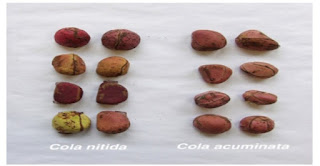Depression: background, practice and pathophysiology
Depression: Background, paractice, essential and pathophysiology
*Outlines*
Introduction
Historical background and definition
Types of depression
Diagnosis and management
Pathophysiology
Conclusion
*Introduction*
Depression affects 264 millions globally and is a major cause of disability (WHO, 2020).
Depression is a multifactorial disorder (Hu _et al.,_ 2021).
*Historical background*
Recognized since ancient times with Hippocrates and minimal advancement is made in it's understanding (Bourin, 2020; Hindmarch, 2021).
The amine hypothesis defined as imbalanced of monamine neurotransmitters in the brain (Joel _et al.,_ 2014).
*Types of depression*
Common types are as follows
Major depression.
Dysthymic depression.
Bipolar depression.
Psychotic depression.
Seasonal affective depression and
parietal depression (APA, 2013; Mayoclinic, 2020).
*Diagnosis and management*
Diagnosis:
Diagnosis are carried out by means of screening mayerial such PHQ-9, ZRS and CES-D
Management: includes psychotherapy and pharmacotherapy.
*Pathophysiology*
ETIOLOGY:
*Brain networks* :
Prefrontal cortex; includes by depression lead to hyperactiviion of prefrontal cortex (Hu _et al,._ 2021).
Amygdala;abnormal increase in volume has been found (Hamilton _et al,._ 2013).
Basal ganglia; exhibit reduced in motivation and anhedonia (Savitz and Drevet, 2013).
Hippocampus; depression induced a reduce in hippocampal volume (Eleni, 2012; Campbell _et al,._ 2004).
Neurotransmitter system, Tryptophan depletion, lead to development of depressive symptoms (Hu _et al,._ 2021).
*Gut microbiomes*
their dysregulation induces depression (Hu _et al.,_ 2021).
*Immunological factor*
Proinflammatory cytokines causing peripheral to tryptophan depletion, may lead to depressive symptoms (Hu _et al.,_ 2021).
*Environmental factor*
elevate depression risk in genetically vulnerable individual (Hu _et al.,_ 2021).
*Early life trauma*
Traumatic childhood may lead to depressive symptoms (Hu _et al.,_ 2021).
*Neurodegenerative disease*
Alzheimer's disease (AD): Lead to cognition impairment.
Lewy body disease: is associated with cognition impairment and dysfunction in mator control leading to depressive symptoms.
Parkinson's diseases: dysregulation in dopamine, noradrenaline and serotinin neurosecretory neurons induce depressive symptoms.
*Neuroendocrine abnormalities*
Dysfunction of serotinin activity has been observed in depression.
The dysregulation of the HPA-axis inducing serotinin function (Holsboer, 2000).
*Vascular diseases*
A Hypothesis suggest that vascular disease may impact both cognition and emotional processing.
*Conclusion*
Depression is a complex multifactorial condition. While has been made in understanding the depression, more research is needed for better understanding and management of the disorder.
Thanks for reading, make a comment,ask questions and share it to others




Comments
Post a Comment